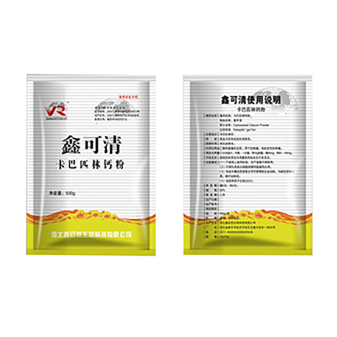- Afrikaans
- Albanian
- Amharic
- Arabic
- Armenian
- Azerbaijani
- Basque
- Belarusian
- Bengali
- Bosnian
- Bulgarian
- Catalan
- Cebuano
- Corsican
- Croatian
- Czech
- Danish
- Dutch
- English
- Esperanto
- Estonian
- Finnish
- French
- Frisian
- Galician
- Georgian
- German
- Greek
- Gujarati
- Haitian Creole
- hausa
- hawaiian
- Hebrew
- Hindi
- Miao
- Hungarian
- Icelandic
- igbo
- Indonesian
- irish
- Italian
- Japanese
- Javanese
- Kannada
- kazakh
- Khmer
- Rwandese
- Korean
- Kurdish
- Kyrgyz
- Lao
- Latin
- Latvian
- Lithuanian
- Luxembourgish
- Macedonian
- Malgashi
- Malay
- Malayalam
- Maltese
- Maori
- Marathi
- Mongolian
- Myanmar
- Nepali
- Norwegian
- Norwegian
- Occitan
- Pashto
- Persian
- Polish
- Portuguese
- Punjabi
- Romanian
- Russian
- Samoan
- Scottish Gaelic
- Serbian
- Sesotho
- Shona
- Sindhi
- Sinhala
- Slovak
- Slovenian
- Somali
- Spanish
- Sundanese
- Swahili
- Swedish
- Tagalog
- Tajik
- Tamil
- Tatar
- Telugu
- Thai
- Turkish
- Turkmen
- Ukrainian
- Urdu
- Uighur
- Uzbek
- Vietnamese
- Welsh
- Bantu
- Yiddish
- Yoruba
- Zulu
7 月 . 25, 2024 11:36 Back to list
Classification and Use of Antibiotics in Veterinary Medicine for Animal Health Management
Understanding Veterinary Antibiotics Classification
Veterinary antibiotics play a crucial role in animal health, disease prevention, and food production. The classification of these antibiotics is essential for proper usage, effective treatment of infections, and the prevention of antibiotic resistance. Broadly, veterinary antibiotics can be categorized based on their chemical structure, mechanism of action, spectrum of activity, and their use in different species.
1. Chemical Classification
Veterinary antibiotics can be classified into several chemical categories, each containing various drugs that act against bacteria in different ways. The major classes are
- Beta-lactams This group includes penicillins and cephalosporins. Beta-lactams inhibit bacterial cell wall synthesis, which is critical for bacterial growth and reproduction. They are commonly used in a variety of animals to treat respiratory infections, skin infections, and more.
- Tetracyclines This class, which includes doxycycline and oxytetracycline, is effective against a wide range of bacteria. Tetracyclines work by inhibiting protein synthesis in bacteria, rendering them incapable of growth. They are often used in livestock for both treatment and prevention of diseases.
- Macrolides Drugs such as erythromycin and tylosin fall into this category. Macrolides also inhibit protein synthesis and are known for their effectiveness against Gram-positive bacteria and some Gram-negative bacteria. They are particularly useful in treating respiratory infections in cattle and swine.
- Aminoglycosides This class, which includes gentamicin and neomycin, acts by interfering with protein synthesis as well. Aminoglycosides are effective against a variety of Gram-negative bacteria and are often used in serious infections due to their potency but require careful dosing to avoid toxicity.
2. Mechanism of Action
veterinary antibiotics classification

Veterinary antibiotics can also be classified based on their mechanism of action. Generally, they can be broad-spectrum or narrow-spectrum
- Broad-spectrum antibiotics are effective against a wide range of bacteria, both Gram-positive and Gram-negative
. These drugs can be extremely beneficial when the specific pathogen causing an infection has not been identified.- Narrow-spectrum antibiotics, on the other hand, are effective against specific types of bacteria. They are often preferred when the causative agent of an infection is known, to minimize disruption of the animal's normal microbiota and reduce the risk of developing antibiotic resistance.
3. Species-Specific Applications
Antibiotic use in veterinary medicine is often species-specific. For instance, certain antibiotics may be effective in cattle, while others are better suited for poultry, swine, or companion animals. This classification helps ensure that the drugs used are appropriate for the metabolic and physiological needs of different species.
4. Regulations and Stewardship
The classification and use of veterinary antibiotics are governed by strict regulations to ensure safety for animals and humans alike. Overuse or misuse of antibiotics in veterinary settings can contribute to antimicrobial resistance, making it a significant public health concern. Veterinary practitioners are encouraged to adhere to principles of judicious use of antibiotics, which include accurate diagnosis, targeted therapy based on culture and sensitivity, and following dosing guidelines.
Conclusion
Classifying veterinary antibiotics is vital for effective disease management, promoting animal health, and safeguarding public health. Understanding their different classes, mechanisms of action, and appropriate applications can help practitioners make informed decisions. As we continue to face challenges related to antibiotic resistance, responsible use of these essential medications in veterinary practice must remain a priority. By adhering to these classifications and guidelines, the veterinary community can contribute to a sustainable future in animal agriculture and health.
-
The Power of Radix Isatidis Extract for Your Health and Wellness
NewsOct.29,2024
-
Neomycin Sulfate Soluble Powder: A Versatile Solution for Pet Health
NewsOct.29,2024
-
Lincomycin Hydrochloride Soluble Powder – The Essential Solution
NewsOct.29,2024
-
Garamycin Gentamicin Sulfate for Effective Infection Control
NewsOct.29,2024
-
Doxycycline Hyclate Soluble Powder: Your Antibiotic Needs
NewsOct.29,2024
-
Tilmicosin Premix: The Ultimate Solution for Poultry Health
NewsOct.29,2024













